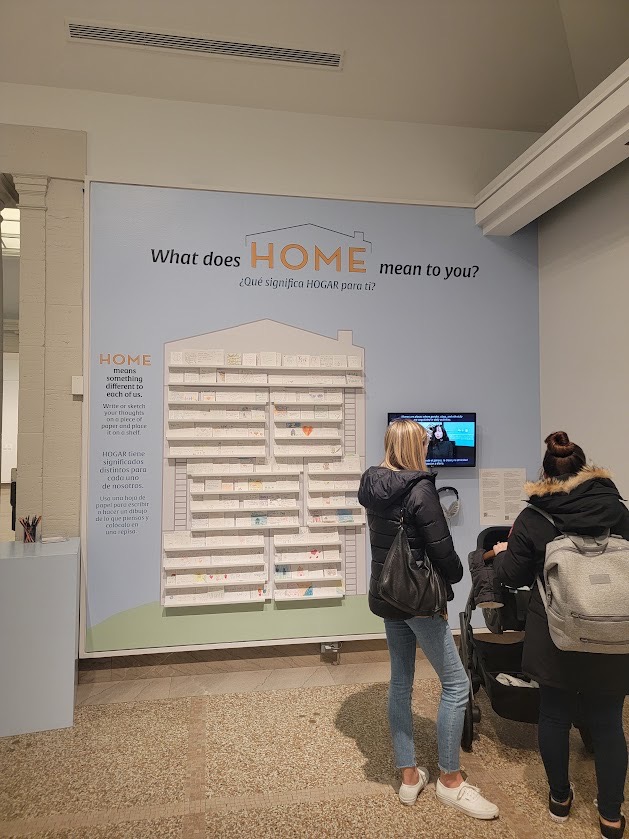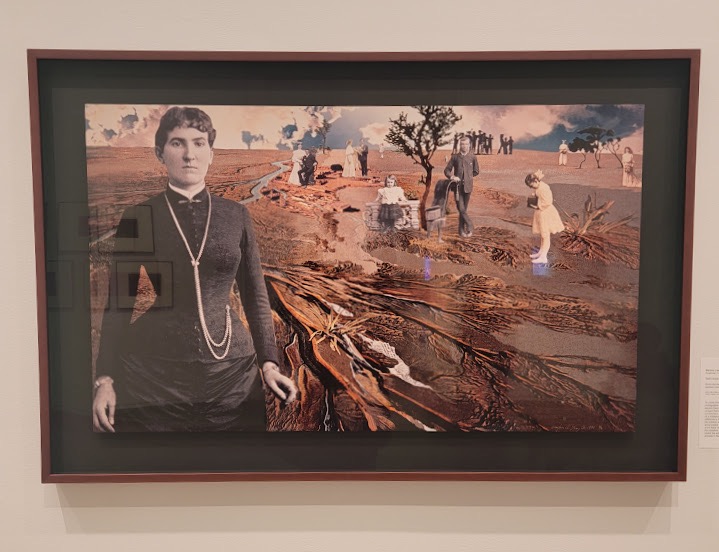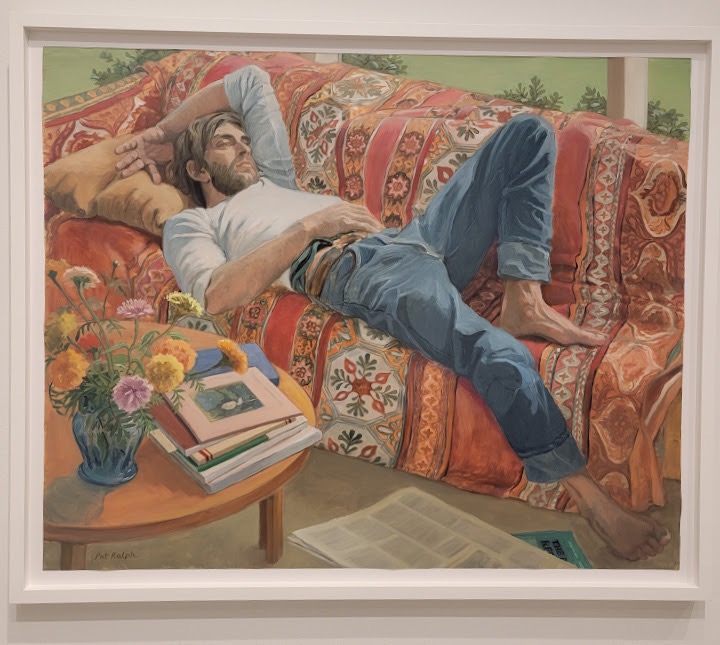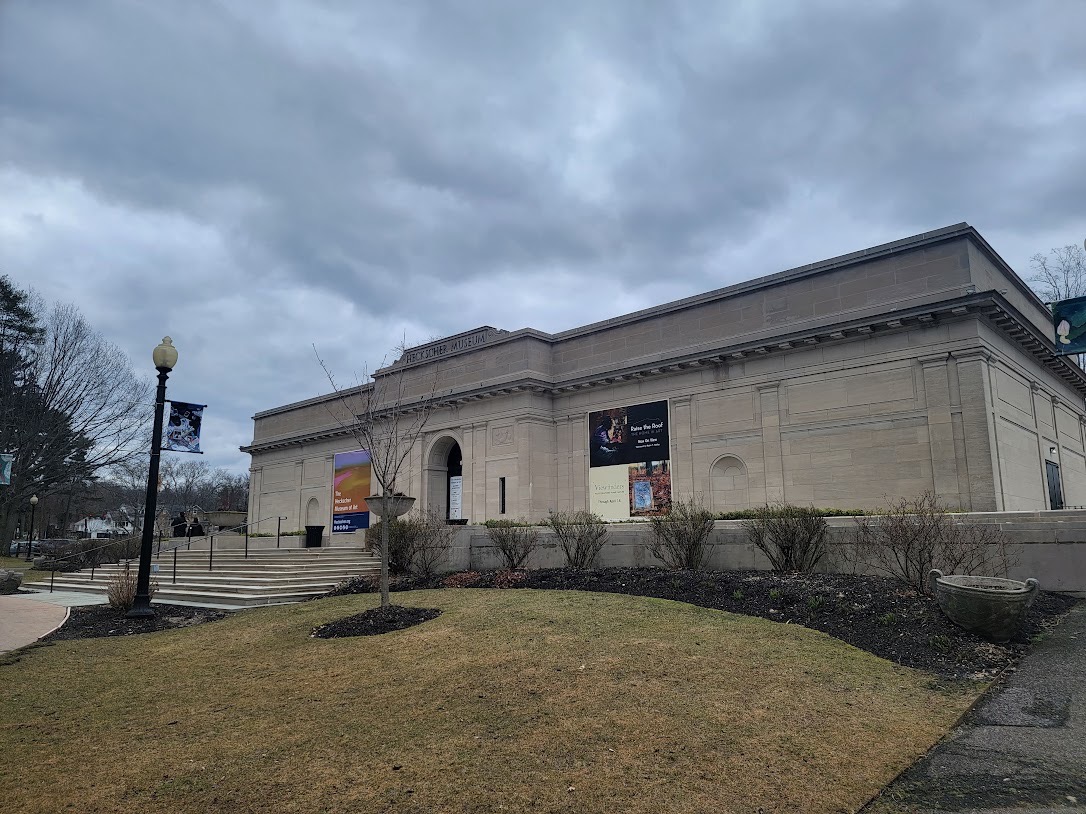Review: The Heckscher Museum of Art
This almost out of place yet beautiful Neo-classical structure is situated in Heckscher Park, a picturesque pond littered with wild life to the left and a well-sized public park right in front. The facade is clean, simple, well kept, with a sense of elegance and a strange professional yet not unwelcoming air. The drive up to this quaint section of Huntington, Long Island was filled with winding roads, road-side shops, and European-esque store fronts.
This was my first time ever at the Heckscher Museum of Art, despite growing up twenty or so miles away. I was expecting a larger museum (the pictures I saw online made the building look much more foreboding that it actually is), but I was pleasantly surprised as I walked inside. The crowd inside was as one would expect on a mild wintery Saturday, with one or two security guards and one volunteer at the small reception desk.
There were only a handful of galleries across a single floor, but the curators utilized the space to their fullest potential. The first thing that caught my attention was the fact that everything (I mean everything) that was published on the walls and on paper were done so in both English and Spanish. The second was the acknowledgment of the museum's standing on traditional territory of the Matinecock Tribal Nation. Both of these things immediately clued me in to the inclusive-minded staff and their intentions to be as involved in their community as much as they could. There were also several stations for children to interact with the galleries, from videos to drawing stations.

The current exhibitions, "Raise the Roof: The Home in Art" and "Viewfinders: Photographers Frame Nature" are simple yet profound. Both exhibitions were mostly focused on a diverse selection of Long Island-based artists. The photography ranged from early 20th century to more recent times, mostly of very local landscape, beautifully transporting you into a time forgotten. There was also a great focus on more modern takes on photography, with works displayed that have been digitally altered to the artist's satisfaction. Most striking to me was Martina Lopez's Heirs Come to Pass, 3, 1991. "To create this work," the accompanying description states, "Martina Lopez scanned photographs from family albums and second-hand stores. Working digitally she arrayed them within a functional dystopian environment, using the marred landscape as a metaphor for family history. In reference to the title, she said, "Heirs are the children who receive the heritage and accumulated wealth of their ancestors. The word 'heirs' is also a homonym for 'errors'...the mistakes that dot a family's history. Heirs inherit the errors as well as the fruits of an ancestor's life."

This piece stuck out to me the most for two reasons: one, it stood by itself on a wall erected towards the middle of this specific gallery. Two, I kept finding different meanings in the symbolism, and questioning what the artist's intentions were. Nothing was obvious to me, and that in of itself was intriguing.
My favorite of the two exhibits was "Raise the Roof." It seemed very intimate yet thoughtful in its selection of work. The descriptions next to each displayed piece were detailed and solid in their stance. From what I could see, there was an acknowledgment that women artists were historically associated with the domestic sphere, and the artists displayed wanted to break out of that space through their specific works. There was also great diversity in the definition of what a "home" is. Artists presented their interpretation of home, domesticity, familiarity, family, and a keen sense of belonging.
In particular, I found myself going back to this specific painting done by Pat Ralph titled The Visit Home, 1983.

Since I've volunteered at the Nassau County Museum of Art for over a year, I couldn't help but to compare the two museums in my head. Both museums are exquisite, from their buildings down to their current exhibitions. However, I can't shake the feeling that looking at the art at NCMA is a totally different experience. There, it seems like you've walked into the house of (as a recent New York Times review noted) a wealthy Long Island home with an impressive yet spotty personal collection. At the Heckscher, I feel as if there is more of a tangible purpose to the art displayed, like there is a real message to be delivered to the community. This, to me, is much more in line with what museums should be doing in order to continue to be relevant. Some museums face the very real prospect of falling off the radar because they have kept the same single-minded borderline colonial mindset of displaying art, trying to stay neutral when really there is no place in today's society for a neutral museum.
All in all, I was absolutely charmed by this museum and what it had to offer, so much so I signed up for a membership. I'm excited to see what the Heckscher has to offer in the future.


Post a comment